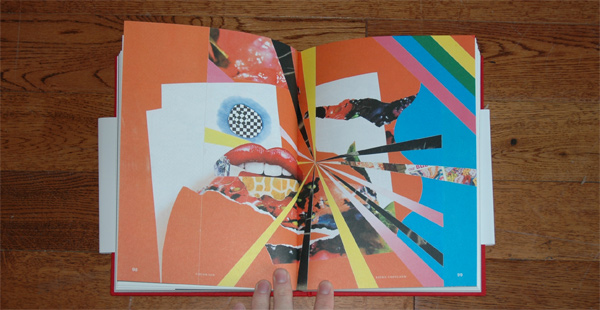Mythtym Nation

Images courtesy of PictureBox Inc
Brooklyn-based artist Trinie Dalton began making zines about mythological subjects a decade ago, while living in Joshua Tree. Perhaps inspired by the desert heat, Dalton published “Strawberry Shortcake Meets the Aztec Gods,” in which the eponymous greeting-card character encounters vicious jaguars from Central American myth. The zines are curatorial projects, generally including an essay by Dalton and the solicited participation of artists, writers, and like-minded friends. Three of the publications are compiled as Mythtym, which Dalton signs tonight.
Says Dalton of her interest in mythology: “I really like the fantasy element. I like the idea that reality isn’t fixed. Not in a spiritual sense, but to think that reality is an option and you can read your reality however you like.” Dalton explains that the palindromic title Mythtym is itself a cosmology, a closed-circuit myth of her own zines. “Touch of Class” is a relatively light treatment of unicorns, while “Werewolf Express” deals with transformation and sexuality in a darker tenor, comparable to the work of David Altmejd. (It was part of a 2005 exhibition, “The Zine UnBound: Kults, Werewolves and Sarcastic Hippies,” at San Francisco’s Yerba Buena Center.) The bulk of the book is an original entry, “Mirror Horror,” of which the centerpiece is Dalton’s essay about a collection of film stills in which women gaze in a mirror before they are killed. Therein she links Snow White to 15th-century witchcraft, discussing the mirror as both “the bane of feminine existence … where self-criticism and loathing fester” and also something mutable and empowering.
Bjorn Copeland, Color Jam, 2008. Courtesy the artist and China Art Objects.
Dalton reviews horror films, and “Mirror Horror” launched from her interest in 70s era cinema—Dario Argento, Mario Bava, and Bruno Gantillon’s soft-core lesbian- and hypnotized-vampire-themed Girl Slave of Morgana Le Fay. Themes of decay and abjection are complemented by Aurel Schmidt’s hyperreal assemblages of anthropomorphized filth. Alex Segade of performance collective My Barbarian contributed a written piece about watching his mother, a model in the 60s, dress up in the mirror to examine his own relationship to the mirror and to costume. Francesca Gabbiani’s elaborate cutouts are vampyric mirrors in which there is no reflection.
The zines were originally handmade in black and white, and were transferred into hardcover format by designer James Goggin, adding Dalton’s photograph of her cat dressed up like Dolly Parton to the cover.
Trinie Dalton signs Mythtym tonight at Den New York, 330 E. 11th St., from 7-9 p.m. Buy the book here.






